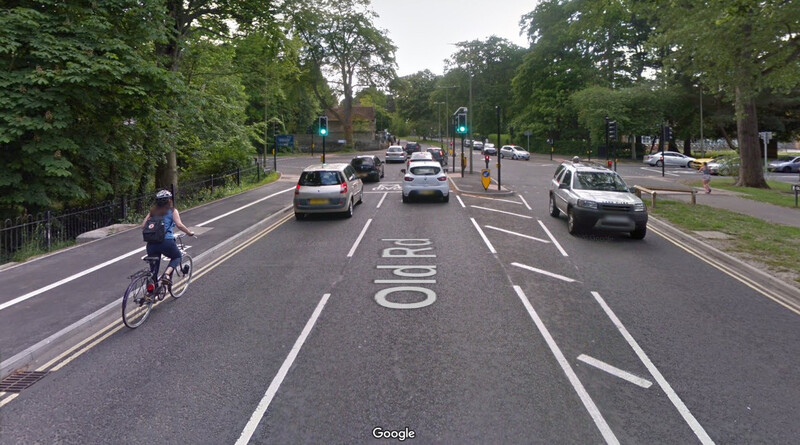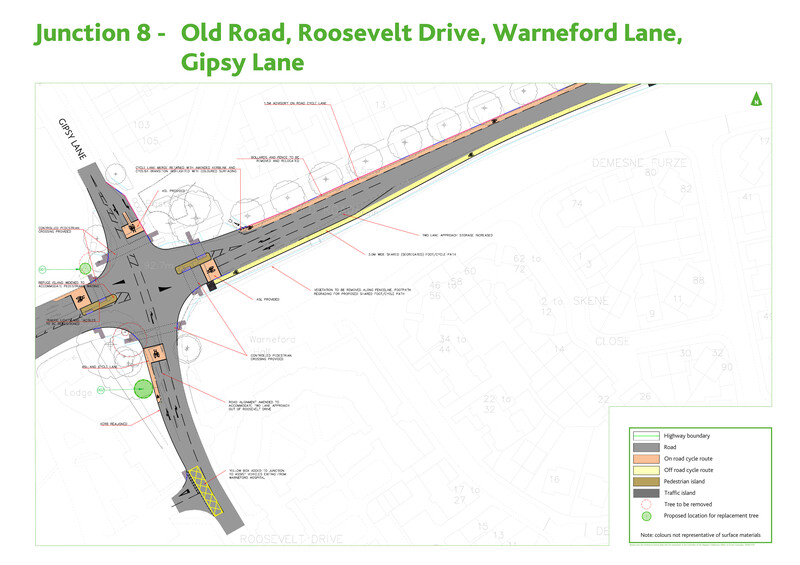As with transport in the UK more broadly, in Oxford a lot of work sometimes seems to be done for very small improvements, in what I call "expensive incrementalism". To illustrate this, consider the rebuild in 2016-2017 of Oxford's Warneford Lane-Gypsy Lane-Roosevelt Drive-Old Rd intersection (which was on my route from work to nursery).
As well as being an example of expensive incrementalism, this illustrates just how car-centric transport planning is. The sole purpose of the rebuild appears to have been to cram more vehicles, or the same number faster, through the intersection during peak hour. The core change was the provision of separate right-turning lanes on all approaches. This has no effect on traffic at most times of day, when the junction is unloaded. And it does nothing for people walking or cycling: some cycling turns are actually marginally harder, while pedestrians now face a longer crossing on one arm.
Now the redesign may take a minute off some commutes, but it's not so easy to see what its broader effects will be. Some commuters may shift to using Old Rd instead of alternative routes, or shift to driving instead of cycling or taking the bus. And if the argument of David Metz in Travel Fast or Smart? is right, in the long-term most of the benefits from the new junction won't be in shorter commute times at all, but will be in slightly higher house prices in the car-commuting areas that funnel through the junction, and perhaps slightly lower prices in alternative residential areas. In any event, it seemed like a lot of money and resources — not to mention the considerable disruption during the works — for not much. With the council under increasing funding pressure, it is hard to believe these kind of schemes are a sensible use of funds.
Looking more broadly, this "upgrade" did nothing to help people who currently find that intersection (and the approach roads) too hostile to cycle along, for themselves or their children. Adding the extra turning lane actually made it worse cycling right from Roosevelt Drive onto Old Rd, and harder for people on foot crossing. And there are some huge potential gains here, noting that a large high school (Cheney) sits on one corner of the intersection, with a university (Brookes) behind it, while other angles of the intersection host two hospitals (the Warneford and Churchill) and the Old Road campus of Oxford University. Rather than "expensive incrementalism", making tiny Pareto improvements (ones that make no one worse off), I think planners need to consider cheap but drastic ideas. Ones that may make some transport modes noticeably worse, but which will produce a big overall benefit...
For an elaboration on this, see "Oxford is a boiling frog, its transport stuck in a steadily worsening local optimum".



Indeed, my thoughts also. How is this better for me as a cyclist? It's not, in fact probably worse now as they've added a pinch point at the start of Old Road.